Pros and Cons of Hydrogen Fuel Cell Vehicles
Will hydrogen fuel cell vehicles be to their makers as the failed Edsel was once to Ford?
Or, despite flak being piled on them from certain quarters, will they arise from a questionable proposition today to a clear win within 10-15 years, or less?
No one really knows, but to be sure, FCVs do present pros and cons which one may selectively tune in to, or attempt to contemplate with fairness and balance for the big picture.
SEE ALSO: 2016 Toyota Mirai Review
This article won’t be a deep dive, but will summarize some of the key benefits and detractions commonly cited by proponents and opponents of FCVs – and we have some good fresh info from the U.S. Energy Department on a couple of issues people may be fuzzy on.Green or Not so Green?
While some plug-in advocates are among those who question whether society ought to even spend the time and money to proliferate FCVs, in the pro-hydrogen camp are industry and government.
Chief among proponents are the U.S. Environmental Protection Agency, the California Air Resources Board, governmental agencies in Europe, Japan, and elsewhere. And, most automakers are open to their prospects, with at least two dozen major brands having varying degrees of commitment to the “hydrogen society,” as Toyota envisions it.
Most bullish maybe Toyota, with Honda, Hyundai, and Daimler right there with it, if not quite as outspoken. They are looking at a “long-term play,” as Toyota’s Senior Vice President Bob Carter has phrased it.
Meanwhile, battery-electric advocates, such as Tesla, and those in harmony with its goals, say the better solution is battery electric vehicles (BEVs).
Fuel cell vehicles furthermore compete with BEVs for funding and subsidies, and since both are still being developed beyond first-generation efforts, the sentiment is why not settle which is best, and just do that?
The problem is powers that be have not settled which is best, it’s a debate. So, the consensus such as it is, has become one of pressing onward with the “all of the above” technological approach, and may the shakeout prove worthwhile in due time.
Pros and Cons of Hydrogen Fuel Cell Vehicles
Pro – Zero Tailpipe Emissions
Like battery-electric vehicles, FCVs emit nothing from their tailpipe. Actually, BEVs don’t have a tailpipe at all, but FCVs emit water vapor.
Water, it’s generally agreed, is pretty harmless, but one UK journalist at the Mirai media launch last year did ask whether intersections during winter would have ice formed one day from many slowly dripping FCVs. Toyota’s lead engineers said they did not think that would be a concern as quantities are only slight. And, water vapor in any case is a whole lot better than greenhouse gases.
Con – Not Really Zero Emissions
FCVs in California are required to use 33 percent renewably sourced gaseous hydrogen. The rest comes from natural gas which is anything but zero emission.
“You can convert natural gas to hydrogen, but that has the same carbon footprint as burning the natural gas,” said Plug-in America Chief Science Officer Tom Saxton. “Don’t let anyone tell you otherwise. Natural gas is CH4, the carbon has to go somewhere.”
While some may have tried to say otherwise, usually, proponents stress more renewable sources are being developed, and that much is positive assuming it happens as predicted.
A recent Swiss study found in order for FCVs to be truly good for the environment, renewable hydrogen is needed.
“The result was conclusive,” said Swiss Federal Laboratories for Materials Science and Technology. “Fuel cells for cars are only ecologically sound if they are able to run on hydrogen from renewable energy sources.”
So, just as researchers are looking ahead for superior energy-dense batteries to make BEVs a better proposition than they are today, so also are other researchers like the National Renewable Energy Lab, and others working toward cleaner hydrogen.
Pro – Fast Fill Up
Present refueling stations are limited and have been reported as suffering downtime, but an FCV can refill in 3-5 minutes with enough hydrogen to go 200-300 miles.
A Tesla Supercharger at 120 kilowatts would need around 30 minutes to do the same, and that’s the absolute quickest today. Level two charging at 240 volts and varying amperage can take several to many hours depending on how large the battery is being filled.
In short, FCVs are as convenient as filling up as a Chevy Suburban, and that’s enough to give a warm fuzzy feeling to many a consumer.
Con – Limited Infrastructure
There are but a handful of stations in California and while cost estimates have varied, we’re talking billions to build out a nationwide network of reliable hydrogen stations.
It’s quite the contrast to the electric grid which is in every home, utterly pervasive and more easily expandable if needed.
Meanwhile, FCV early adopters are effectively tethered to their local stations. The Northeast is the next region projected to open for FCV sales.
Work is underway, and private and government monies are being spent to make this feasible.
Pro – Long Driving Range
A Mirai with 5.0 kg of hydrogen is rated for 312 miles range. A Tesla Model S with a 1,200-pound or more battery can do 270.
If desired, automakers could add compact hydrogen tanks for hundreds of miles of extra range. FCVs here too share advantages petroleum-powered vehicles have in compact, dense energy storage.
The next generation of BEVs are to offer 200-250 miles of range and cost half what the Model S does, but the energy storage potential is one that has caught the attention of those in favor of FCVs.
Con – Hydrogen is Expensive
According to the U.S. Department of Energy (DoE), hydrogen is still finding its price. The only station that’s classified as fully retail currently sells hydrogen at about $13.50 per kg, said a DoE representative today.
Toyota’s Environmental Communications Manager Jana Hartline estimated today maybe $10-$12 per kg, which would mean $50-60 for a complete fill for the 312-mile Mirai.
The DoE is also on board with the FCV promotion. A representative said because FCV fuel economy is greater than 60 mpgge (miles per gasoline gallon equivalent), one can travel “2-3 times farther on $13.50 than compared to today’s gasoline vehicles.”
That’s still not as efficient as a 114 MPGe Nissan Leaf on electricity costing an average 12 cents per kilowatt-hour, but point taken.
Compared to a 50 mpg Prius, assuming today’s average $2.577 per gallon for gas, 6.24 gallons to go 312 miles would cost $16.08.
At $13.50 per kg, 5 kg to fill the Mirai would be $67.50. At a low of $10 per kg, it would be $50 to fill the tank for that 312 miles.
As for the aforementioned Leaf, figuring 114 MPGe and the U.S. average 12 cents per kilowatt-hour, cost to travel 312 miles is $11.07. A 93 MPGe Tesla Model S P90D would cost $13.57 for 312 miles.
That’s quite a bit less than $50-$67.50.
Good thing Toyota as well as Hyundai and Honda are making hydrogen “free” (or folded into the price).
Pro – Hydrogen Costs Projected to be Cut By More Than Half
Looking further at the best-case 67 MPGe Mirai, the hydrogen cost picture is due to get better.
“If the tank is ~5 kg and DoE’s short-term hydrogen production goal of $7.00/gge is met, the fill up will be $35.00,” said a representative. “However, if DoE’s aggressive long-term target of $4.00/gge is met, a fill up would be only $20.00. (See: DoE Record #14013.)
“If produced at high volume, the cost of hydrogen from renewables/electrolyzers could be around $5/gge even using today’s electrolyzer technology,” said the DoE. “The cost of hydrogen from renewables will decrease even further using longer-term approaches (e.g., direct solar photo-electrochemical conversion). DOE’s early market goal is $7/gge regardless of the production pathway.”
Con – There are Many More Uncertainties
So much needs to happen in building out infrastructure, securing renewable hydrogen, ultimately getting fuel costs down for the time when hydrogen is no longer included with the car.
A long-term play, indeed.
The joke used to be FCVs are the future, and always will be the future. Well, they’re here now, and more are believed in the works as is the build-out to make them feasible.
It’s a vision, and it does take resources that could be used toward BEVs. Those pushing it forward see it as making sense.
Pro – FCVs are Technologically Advanced
Say what you will about the physical styling of cars by Toyota, Honda, Hyundai, and Daimler, under the skin, they are pure Buck Rogers.
At least, that is how people who are taking a fancy to them see things. Beauty is in the eye of the beholder, so while some may yet frown, others do smile when they see what’s being offered.
FCVs are actually a form of hybrid. The Mirai in particular borrowed hardware and computer controllers from the Prius and Camry Hybrid to reduce production costs. It does have a small traction battery to teeter off of, and is not purely and only driven by the fuel cell stack, though this is the primary motive source.
Same is generally true of the Hyundai Tucson and Honda FCX Clarity.
What is more, it could be feasible to wed battery tech further to FCVs and make a plug-in hybrid FCV as Audi has already demonstrated with its A7 h-tron plug-in prototype.
Con – FCVs are Unproven
No one has seen a 10-year-old production FCV (as is true for BEVs), and it is known the fuel cell stack decreases in efficiency. Failures are naturally of a different order than, say, a blown head gasket or spun rod bearing.
What may not sound impressive is the hours of service estimated. The U.S. Energy Department told us Toyota’s converted Highlander FCVs were good for about 2,500 hours or more. This might equate to around 75,000 miles.
Today the DoE says things are looking better when we asked whether they might go 100,000-200,000 miles like an internal combustion car.
“We have demonstrated more than 3,900 hours in the lab and the DoE target is 5,000 hours or 150,000 miles,” said a representative.
Hartline, said Toyota has subjected the Mirai, for example, to extreme Alaska cold, and Death Valley heat.
Its engineers have abused the car as part of testing and she said they would not deliver a car to market that was not up to Toyota standards.
Of course, all the vehicles are warranted and just as the fuel is “free” (included in the price), automakers know they will have to pay dues, and this includes offering buyers / lessees assurance that they will be covered if something goes wrong.
Pro – FCVs are Heavily Subsidized
(Note – this is a “pro” if you’re a consumer, a con if you’re philosophically a free-market advocate.)
The Hyundai and Honda FCVs are lease only, but Toyota will sell its FCV. It’s eligible for up to $13,000 in total subsidies in California, which helps whittle down its $58,325 price to as low as $45,000.
Con – FCVs Are Still Pricey
Leases for around $500 per month or purchases of upwards of $60,000 are double the average new car price. What’s more, the cars are certainly being underwritten by respective manufacturers as part of their self-sacrificial – actually enlightened self interest – in floating the enterprise until that day when profitability can arrive.
In time, economies of scale are expected to see prices decrease.
Hartline said she could not discuss actual production costs but cited the original Prius which was not profitable until second generation.
She also said some original Prius cars are still running around on their first battery, and they too were subjected to intense scrutiny, but came out on top.
That is the goal for FCVs which ready or not, are on their way.
Become an AutoGuide insider. Get the latest from the automotive world first by subscribing to our newsletter here.
More by Jeff Cobb























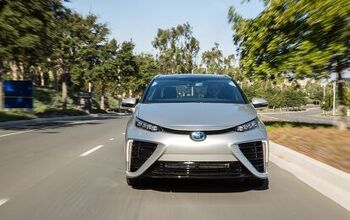


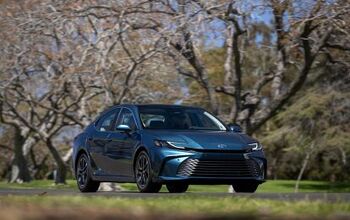



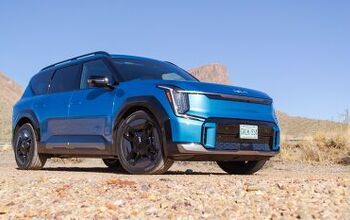


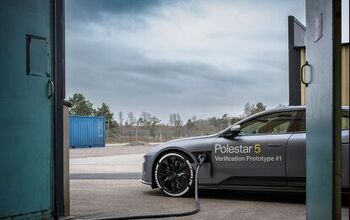
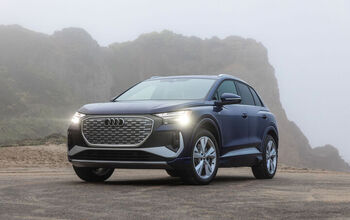
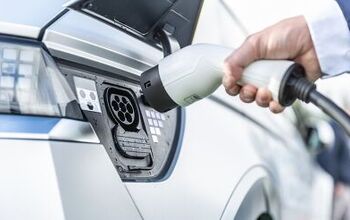
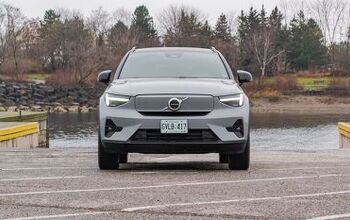
Comments
Join the conversation